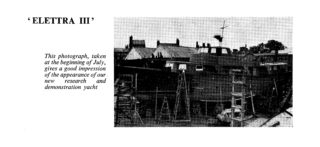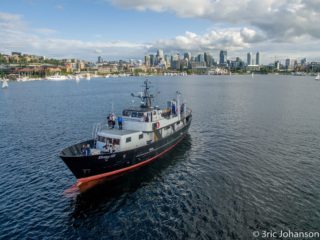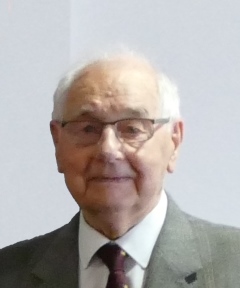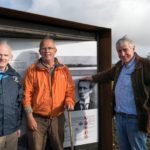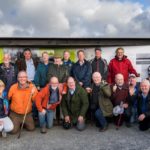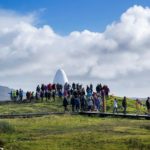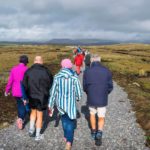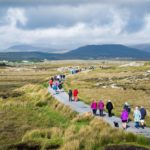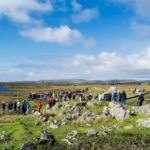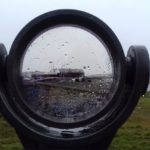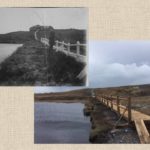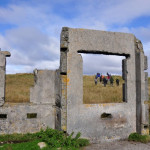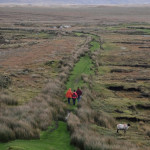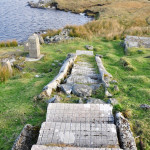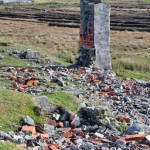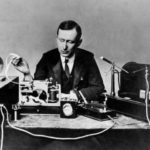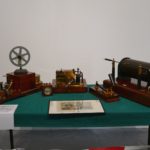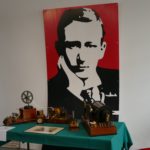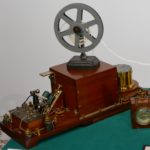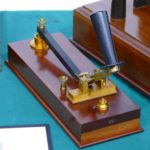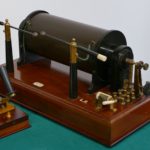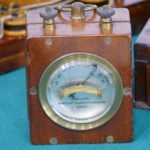News from the Mill
from Tim Wander
A busy summer! Having stepped into the breach (so to speak) at the Mill to help Nick and the team after Nick Sturgess’s departure earlier this year – this summer has been both fascinating, interesting and all times a little frustrating – but a lot of progress has been made.
Firstly thank you to all the volunteers from all the different groups whose efforts continue to make Sandford Mill a unique and inspiring building – part museum, part store, part repository, part classroom, outward bound centre, school and many other things – hence the new signs I put up for open day – that just say…Sandford Mill.
You have to be there for a while to even work out the many different things that go on. On the building side I have been able to lend my support to push on with a series of building and site checks – all have gone well and the electrical fault in the classroom pump room has now been resolved.
On the museum front, Â in the short time available, I have managed to reorganise parts of the collection and document, reclassify and move around other parts into logical groups. This along with several clear outs has made some limited space – (which seems to be filling rapidly even now).
Some fascinating museum finds have been identified – the YB1 radio from 1918 (but with a ‘needs more research’ provenance associated with the first BBC broadcasts through early 1923) and the HS55A amplifier (1917) are very rare items and both are planned to be gently restored. We have managed to restore the original 2MT Piano stool and Peter Bridgeman has done a fantastic job with the T1154 and R1155 refurbs – now on display at Oakland’s. Colin Page is also working on one of the Marconi Mores code inkers which is in an very poor condition.
Other projects now ongoing include the 1971 LOCUS 16 Computer – the world’s first 16 bit minicomputer donated last year by BAE systems which has been installed and is now being rebuilt at the Mill. This is the only surviving complete example in the world. The Television volunteer engineering team has grown and sound and vision seem to have been restored …..there is even a rumour that one of the new volunteers has just fixed a design fault on a circuit board on a Camera that was shipped in 1966 – 50 years on – now that is proper after sales service.
We have also started an internal revamp and reorganisation of the famous 2MT Writtle Hut, working toward  the rapidly approaching centenaries  – January 2020 through to November 2020 for the  Chelmsford Broadcasts, (June 2020 for  Dame Nellie’s Concert) and of course February 2022 starts the 100th anniversary year of 2MT. A lot of planning is already underway including a planned 95th trial celebration/broadcast from ‘2MT’ in February 2017 – we hope to produce actual concerts and broadcasts at the correct time and place – 100 (and 95) years on. Watch this space for future updates.
As part of all this I am attempting to find time to rework the 2012 New Street Works book into a 2020 Centenary celebration for the New Street works and Melba’s broadcast – so if you have any memories or anecdotes or photographs of the factory that didn’t make it the first time, please send them in. I have received many since it first came out and many found new photographs, including a large section, sadly, on the sites recent demolition and “rebuild” – photographed and recorded over several years by Susan and Richard Wilson.
I also hope to rewrite the 2MT Writtle Book in some form for the centenary– (yes again) Since the 2010 edition much more research has come in (especially re the RFC origins of the 2MT team) and many more photographs have turned up. If you have anything to add to the 2MT story please email me – indeed if you would like to help email me!!
As per Hall Street this spring, any proceeds from these hopefully ‘fascinating reads’ will go toward the Centenary project funding. There will also be a dedicated website to the centenary plans and we are hoping to produce a short video or two to promote the events. Watch this space!
And now some appeals for the Museum:-
- Does anyone know of – or can you guess from your career history – where we might find a Marconi Myriad Computer? Today we (i.e. the National Computer Museum, Leeds University, Sandford Mill et al) cannot find any surviving example: I have vague memories about AFTN Switching in Cyprus (FLIGHT report confirms installation in 1967) and South Africa military switches – can you help?
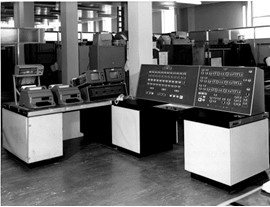

- We are trying to get the important Great Baddow Chain Home Radar Mast listed – you may be surprised to know that due to several ‘technical’ reasons this unique and only complete surviving CH radar mast has effectively no statutory protection. I have to assemble a report about its use from 1954 until today. This history, when coupled with its important wartime history, will allow us to have another go – so any information please email me – I need to cover all its uses – for radar, TV, microwave projects etc. Thanks.
- As the Centenary fast approaches we are urgently seeking the loan of any early wireless equipment from WW1 and RFC use designed by the Brooklyn/Joyce Green RFC and later Writtle engineering teams. So can anyone loan us a Sterling W/T set or one of the early AD series of equipment designed, built and tested by Eckersley and his team between 1919 and 1922?
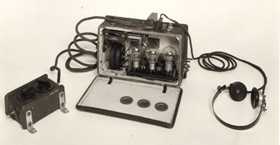

- The Hut now has an original 1916 tortoise stove in place and a correct Cliftophone gramophone on its way. We are looking for a 78 RPM record of Robert Howe singing the ‘Floral Dance’ – the first record to be played on 2MT.
- We are still looking for an elusive picture of the Hall Streets Works wireless station – the one across the road from the main factory site…anyone seen one?
- We are looking for more information on the Broomfield Wireless Station – formed in 1903 and badly damaged in WW2 – does anyone have any pictures or can point me to a source?
The 2MT transmitter rebuild is also gathering pace – through a generous donation to the museum we have now been able to provide all the original Marconi valves and new displays are being planned including a history the valve from ‘Fleming to Acorn’ – and a new display dedicated to the career of Peter Eckersley. Indeed a huge amount of volunteer effort has gone into sorting out the Mill’s huge valve collection and there have been some very early and possibly unique finds that we hope to display soon.
So while working on the future centenaries of British Broadcasting at the Mill – we were also pleased to accept on long term loan the amazing recreation of the Titanic Radio Room built by Ted Sinclair and first seen at the successful Hall Street exhibition earlier this year. I have also managed to have a first pass revamp of just some of the displays at Oaklands Museum – more planned in January.
The Sandford Mill Museum area has also had its own ‘revamp’ of some of the displays – much more work needs to be done – interestingly the Museum holds potentially the largest collection of original MIMCO equipment in the world – now being documented in a separate project.
The two Mill ‘open days’ were very well attended with numerous museum tours and hut tours telling the story of Marconi, Crompton’s, Safety at Sea, the Titanic and, of course, the birth of British Broadcasting. Thanks to all who those who came and those who helped.
A new line of research has been the Mill’s Filter House – with each tour attracting 60 plus people. The story of Chelmsford’s turbulent and, at times, difficult water supply from 1815-1984 has met with a lot of interest and several new projects are being based around this unique building and indeed the history of Sandford Mill itself. The Filter House is probably the last of its type in the world that went from “black†river water to chlorinated/softened/Ph controlled drinkable water in one building – producing some 3 million gallons everyday.
On a slightly smaller scale Jim and the team have nearly rebuilt the water wheel and the volunteers continue to support the education team with their many “hands on†working displays and demonstrators. Even some horses harnesses  from an earlier century are being restored – proving it’s not all science and engineering based here at the Mill!.
Best Regards,
Tim Wander (G6GUX yes offcom just gave it back -)
timwander@compuserve.com




